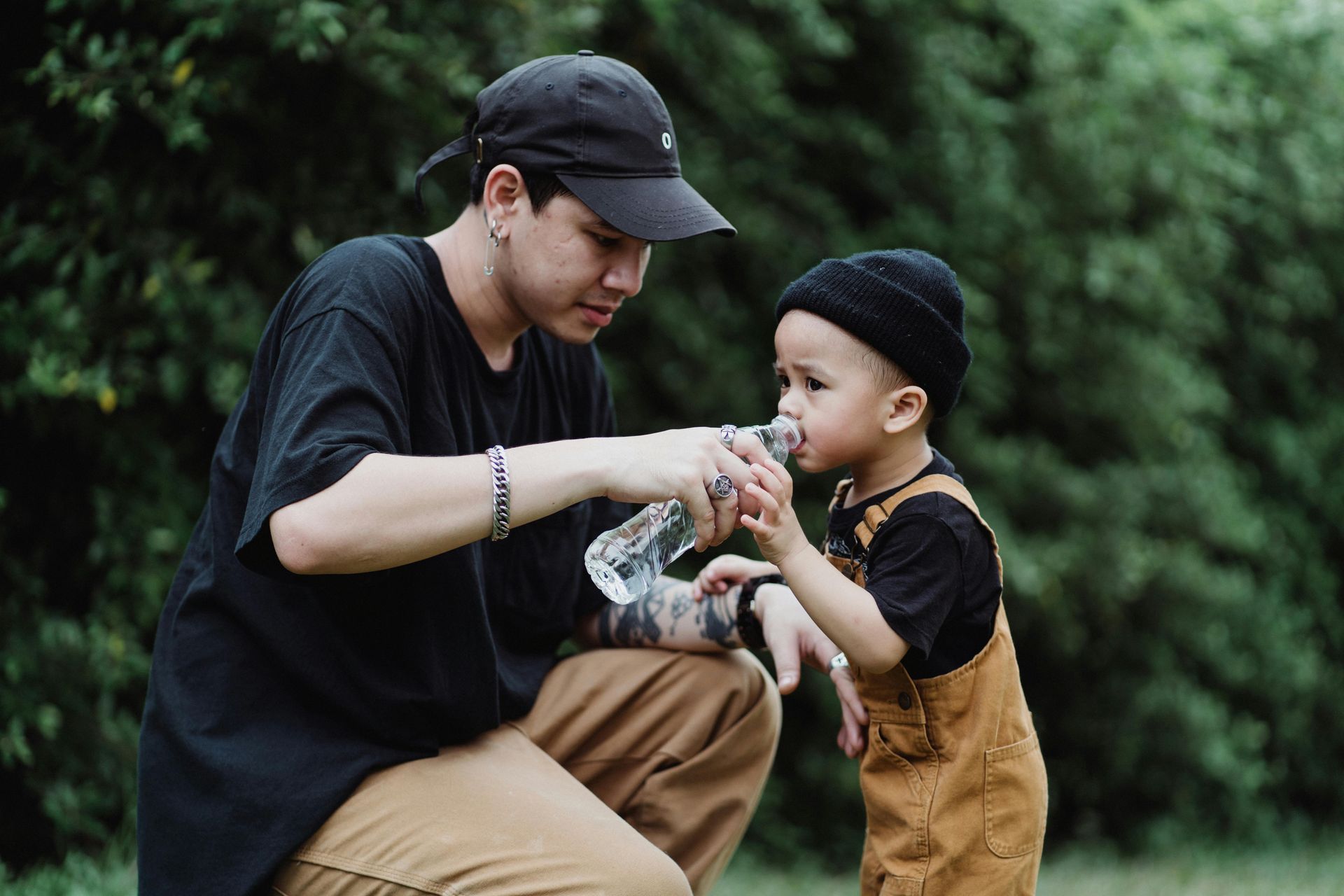Apply for a Green Card as a Victim of Trafficking
Denice Flores • October 24, 2024
The U.S. offers avenues for relief, including the opportunity to adjust status to a lawful permanent resident of the U.S. under specific provisions for trafficking victims.
Here is an overview of the requirements and important considerations to know:
In order to be eligible to apply and become a lawful permanent resident, you must meet the following requirements:
- Be lawfully admitted to the United States as a T-nonimmigrant;
- Continue to hold T nonimmigrant status at the time of applying for a green card;
- Maintain continuous physical presence in the United States. There are two ways to prove continuous presence;
o Continuous physical presence must be maintained for at least 3 years, since the date of being lawfully admitted as a T nonimmigrant
o Or continuous presence can be the time that the trafficking investigation or prosecution takes, whichever period of time is shorter.
- Prove you are a person of good moral character since first being admitted as a T- nonimmigrant and during the entire time your green card application is pending; and
- Meet one of the following:
o Prove you have complied with any reasonable request for assistance in the investigation or prosecution of the acts of trafficking since first being admitted as a T-1 nonimmigrant and until USCIS makes a decision on your green card application; or
All of the requirements must be satisfied to be eligible to apply for adjustment of status as a trafficking victim.o Prove you would suffer extreme hardship involving unusual and severe harm if you were removed from the United States; oro Prove you would suffer extreme hardship involving unusual and severe harm if you were removed from the United States; or
Applying for your green card is a significant step towards reclaiming your life and securing a future in the U.S. If you or someone you know is a trafficking victim seeking to adjust status, contact our office and schedule a consultation with our experienced immigration attorneys.
This blog is not intended to be legal advice and nothing here should be construed as establishing an attorney client relationship. Please schedule a consultation with an immigration attorney before acting on any information read here.
Denice Flores
Similar Posts

Key Changes to T Visa Process (Effective October 23, 2024) U.S. Citizenship and Immigration Services (USCIS) recently updated its policy for T visas, which provide protection and legal status to noncitizen victims of severe human trafficking. This update, effective October 23, 2024, introduces key changes that streamline the application process and broaden access to benefits for trafficking survivors. One of the most impactful updates is the new ability for T visa applicants to receive work authorization while their T visa application is still pending. Immediate Work Authorization Eligibility In a major shift, T visa applicants can now file for and potentially receive work authorization before their T visa application is approved. Through the new “bona fide determination” process, USCIS assesses basic eligibility at the outset. If an application is deemed “bona fide,” the applicant may be granted deferred action and an Employment Authorization Document (EAD), allowing them to work legally in the U.S. while awaiting full T visa approval. This is a critical step forward, as applicants no longer need to wait until their T visa is approved to receive work authorization. Additional Policy Highlights “Any Credible Evidence” Standard The policy emphasizes that applicants can submit any form of credible evidence in support of their case. This approach ensures that survivors, who may lack traditional documentation, still have a fair chance to prove their situation. Victim-Centered and Trauma-Informed Approach The update reinforces a trauma-informed review process, prioritizing the needs and well-being of trafficking victims and making it more compassionate. Physical Presence Requirement Flexibility USCIS now allows certain exceptions to the rule that applicants must remain in the U.S. due to their trafficking situation, providing flexibility for those who may have briefly departed and returned. Clarified Reporting Requirement While applicants generally must report their trafficking to law enforcement with jurisdiction over trafficking cases, exceptions exist for individuals unable to report due to age or trauma. What This Means for Applicants The T visa offers temporary legal status to certain victims of human trafficking, typically allowing them to stay in the U.S. for an initial period of up to four years. With these updates, the T visa program is now more accessible and supportive, helping survivors gain stability and security sooner. Need Help with a T Visa Application? If you or someone you know is a trafficking survivor and may benefit from a T visa, we’re here to help. Contact us today for expert guidance on T visa applications and work authorization, and start your journey to legal protection and stability.

On September 25, 2024, the U.S. Citizenship and Immigration Services (USCIS) recently updated its guidance on the Child Status Protection Act (CSPA) to clarify how an applicant’s CSPA age is calculated when extraordinary circumstances are involved. This update is designed to help Applicants and their families better understand how their eligibility for certain immigration benefits may be impacted by delays or special conditions during the process . The CSPA is a crucial law that helps protect children from "aging out" of the immigration process , meaning turning 21 years old while waiting for family-based immigration petitions to be processed. Normally, once a child turns 21, they may no longer qualify for a green card under certain family visa categories. However, the CSPA allows a special calculation of a child’s age to determine whether they can still be considered a "child" for immigration purposes, even if they have passed the age of 21. USCIS's recent update focuses on two key points: First , it clarifies how extraordinary circumstances may excuse an applicant from the usual requirement to apply for a green card (or "seek to acquire" permanent residency) within one year of their visa becoming available. If extraordinary circumstances, such as medical issues or other unavoidable situations, prevent an applicant from meeting this deadline, they may still qualify for CSPA protection as long as they can demonstrate these circumstances. Second , the guidance outlines how to calculate the applicant’s CSPA age in cases where these extraordinary circumstances apply . If an immigrant visa was available for a continuous one-year period, the CSPA age is calculated from the date the visa first became available. However, if the visa became available and then unavailable before the applicant could apply, the CSPA age calculation may still use the date the visa first became available—if the applicant can show they were unable to apply due to extraordinary circumstances. This update addresses an issue that was not previously covered in detail by USCIS policy. Before this clarification, it was unclear how the CSPA age would be calculated for noncitizens who had extraordinary reasons for not applying for a green card during the time their visa was available. By providing this updated guidance, USCIS aims to ensure that these cases are handled consistently and fairly. In conclusion, this recent USCIS update offers clearer guidance on how extraordinary circumstances affect CSPA age calculation. If you believe your family might benefit from this update, please reach out to one of our highly experienced immigration attorneys, who can help you understand how these changes apply to your situation. For more detailed information, you can visit the USCISPolicyManual or review the official USCISannouncement .

The T visa is a nonimmigrant visa designed specifically for victims of severe forms of human trafficking. It provides recipients with temporary legal status in the United States, allowing them to live and work in the country for up to four years. This visa not only ensures their safety but also grants access to essential public benefits such as housing assistance and medical care. In the fight against human trafficking, the T visa stands as a crucial tool, offering hope and legal protection to victims who have endured unspeakable hardships. Established under the Victims of Trafficking and Violence Protection Act of 2000 (VTVPA), the T visa aims to shield individuals trafficked into the United States from further exploitation while empowering them to assist law enforcement in prosecuting their traffickers. To establish eligibility for a T visa, the applicant must demonstrate that they: 1. have been a victim of a severe form of trafficking in persons; 2. are physically present in the United States, American Samoa, or at a U.S. port of entry on account of such trafficking; 3. have complied with any reasonable request for assistance in a federal, state, or local investigation or prosecution into acts of trafficking or the investigation of a crime where acts of trafficking are at least one central reason for the commission of that crime, except when the applicant was under 18 years of age at the time of victimization or is unable to cooperate with a request due to physical or psychological trauma; 4. would suffer extreme hardship involving unusual and severe harm upon removal from the United States; and 5. are admissible to the United States or qualify for a waiver of any applicable grounds of inadmissibility. The 2021 revisions to the USCIS Policy Manual, particularly in Volume 3, Part B – Victims of Trafficking, have clarified the broad definition of trafficking. This has facilitated more successful T visa cases without requests for evidence or the need for litigation. Application Process Applying for a T visa involves submitting a comprehensive application package to the United States Citizenship and Immigration Services (USCIS). The core of the application is the Form I-914, which includes: Detailed personal information and history of trafficking victimization. Supporting documentation such as police reports, medical records, and witness affidavits. Evidence of cooperation with law enforcement. Proof of extreme hardship if deported. Once USCIS receives the application, they conduct a thorough review to determine eligibility for the T visa. Upon approval, T visa holders receive temporary legal status in the U.S. for up to four years. During this period, they can rebuild their lives with access to crucial resources and the ability to work legally. Importantly, after three years of continued presence in the U.S. under T visa status, individuals may apply to adjust their status to become lawful permanent residents (green card holders). Navigating the complexities of the T visa application process requires legal expertise and compassionate support. At Santos Lloyd, our dedicated team of attorneys specializes in immigration law, with a focus on assisting victims of human trafficking. If you believe you have been a victim of human trafficking or would like a comprehensive screening, please contact our office – we are eager to help you!

On June 18, 2024, President Biden announced a series of immigration actions using the authority granted to him by our existing immigration laws. These actions will help certain undocumented individuals in the United States, including: Spouses and children of U.S. citizens who have been living in the United States for at least 10 years. You may be eligible to apply for your green card without leaving the United States, if, as of June 17, 2024: ○ You are in the United States after entering without permission; ○ You have lived in the United States for at least 10 years and have never left; ○ You are legally married to a U.S. citizen or have a qualifying stepchild relationship with a U.S. citizen; and ○ You do not have certain criminal history or pose a threat to national security or public safety. If you meet these criteria, the government MAY grant you parole-in-place. Parole would be granted for a one-time period of three years. You may also be eligible for employment authorization for up to three years. If you are granted parole y ou may apply for your green card within three years of approval. Eligibility is determined on a case-by-case basis. College-educated DACA recipients and Dreamers who are qualified for nonimmigrant status, such as an H-1B specialty occupation visa. You may be eligible to apply for a temporary visa more easily, if: ○ You have a degree from an accredited U.S. institution of higher education; and ○ You have an offer of employment from a U.S. employer in a field related to your degree. Please note that these programs have NOT YET begun. Details on how to apply are expected to be released by the end of the summer through a Federal Register notice. This means: You cannot submit an application at this time. An early-filed application will be rejected . You should not pay anyone a fee associated with filing an application at this time. Be patient and take the time to find the right help. The wrong advice could harm your chances of staying in the United States, getting lawful status, or becoming a U.S. citizen. Don't be fooled by notarios and other consultants who promise immediate results or special solutions in order to steal your money. Many unscrupulous individuals will cost more than licensed attorneys! If you are unsure if someone is qualified to help, ask for proof of their credentials and retain a copy of that evidence. This program could also be legally challenged, which could impact its implementation. This makes it even more important to have a qualified, knowledgeable attorney. USE AILA’s Find an Immigration Lawyer Search, ailalawyer.org , to find a licensed immigration attorney in good standing. Or find an accredited representative at: https://www.justice.gov/eoir/find-legal-representation . FONT: https://www.aila.org/library/information-and-guidance-on-new-actions-to-promote-family-unity

On March 31, 2024, U.S. Citizenship and Immigration Services (USCIS) implemented a policy update that limits gender marker selections on all immigration forms and systems to two biological sexes: male and female. This change eliminates the option for applicants to select a non-binary or “X” gender marker—an option that had previously been permitted on some forms. While USCIS emphasizes that this update does not change who qualifies for immigration benefits, it may significantly impact how certain applications—particularly asylum claims based on gender identity-related persecution—are understood and evaluated. What Has Changed? Under the revised policy, applicants may now only choose “Male” or “Female” when completing USCIS forms. The ability to select a non-binary or third-gender option is no longer available. Applicants may still request to change their gender marker with USCIS, but only within the male/female binary. Supporting documentation, such as medical or legal records, is not required to make the change. This means that transgender individuals can still align their gender marker with their identity—if it falls within the two binary categories—but non-binary individuals are no longer represented. The change follows guidance issued by the federal Office of Management and Budget (OMB), which called for greater consistency in the collection of sex and gender data across federal agencies. Impact on Asylum Applicants This policy update is especially important for individuals applying for asylum based on persecution related to their gender identity. Under U.S. immigration law, asylum is available to people who have suffered persecution—or fear future persecution—based on their membership in a “particular social group.” This includes people targeted for being transgender, gender non-conforming, or otherwise not aligning with socially expected gender roles in their home country. Although the legal standard for asylum remains unchanged, the removal of the non-binary gender marker could make it harder for some applicants to clearly present and document their identity. In asylum cases, credibility and clarity are crucial. The ability to accurately reflect one’s gender identity on official forms can play an important role in establishing the foundation of a persecution claim. Now, applicants who identify as non-binary or outside the traditional male/female categories may be forced to select a gender that does not align with their lived experience. This could lead to confusion in their case file or require additional explanation during interviews or hearings. This policy could weaken the strength of some asylum claims—not because the underlying facts have changed, but because the official forms now fail to reflect the applicant’s true identity. For example: A non-binary person applying for asylum after being targeted in their home country may now have to select “Male” or “Female” on their asylum application, despite not identifying as either. This mismatch may lead adjudicators to question the applicant’s identity, possibly weakening the strength of the claim or requiring added clarification and documentation. In defensive asylum cases—where applicants are in removal proceedings—such inconsistencies could create unnecessary hurdles and complicate the evidentiary presentation. What Can Applicants Do? Despite the change, individuals can still pursue asylum based on gender identity. The underlying eligibility criteria remain the same. However, applicants should be prepared to clearly explain any differences between their stated identity and the gender marker required on USCIS forms. Applicants are encouraged to: Include a personal declaration explaining their gender identity in detail and how it relates to their fear of persecution. Provide evidence such as affidavits, country condition reports, or expert testimony that supports the claim. Work with an experienced immigration attorney who can help present the claim effectively and prepare for any questions that might arise from the new form limitations. The new USCIS policy on gender markers may seem like a technical update, but for asylum seekers fleeing gender-based persecution, it has real implications. While individuals are still legally eligible to seek protection, the limitation to binary gender options could make it more difficult to fully and clearly present their case. If you or someone you know is facing immigration challenges related to gender identity—or is concerned about how this policy may impact an asylum claim—please contact Santos Lloyd Law Firm to schedule a consultation with one of our experienced immigration attorneys. We’re here to help ensure your voice is heard and your case is handled with the care and expertise it deserves.

In 2025, the immigration landscape continues to shift under the weight of national security concerns, ushered in by Executive Order “ Protecting the United States From Foreign Terrorists and Other National Security and Public Safety Threats. ” This directive tasks federal agencies—including the U.S. Department of State—with implementing enhanced screening and vetting protocols for all foreign nationals seeking visas or other immigration benefits. The result? A dramatically intensified vetting process, along with mounting concerns from immigrants, attorneys, and civil liberties advocates alike. Traditionally, airport security focused on verifying travel documents and screening for prohibited items, while consular officers assessed the legitimacy of visa petitions and the admissibility of applicants. Extreme vetting, however, represents a significant shift toward a far more invasive and comprehensive investigative process. It now includes detailed background checks, biometric verification, digital forensics, and expansive scrutiny of an applicant’s online presence and criminal or financial records. Since President Trump’s second term began in January 2025, the implementation of extreme vetting has expanded rapidly. Today, border screenings go far beyond routine document checks, encompassing a full-scale evaluation of a traveler’s digital life. This pivot reflects the administration’s intensified focus on national security, but it has also triggered urgent discussions about privacy, due process, and the fairness of modern immigration enforcement. At U.S. ports of entry—especially airports—noncitizens are now subject to rigorous and invasive procedures, including: Inspection of cell phones, laptops, and other devices (including deleted content) Review of social media activity on platforms like TikTok, Instagram, and X (formerly Twitter) Biometric scanning, including fingerprinting and facial recognition These measures are no longer confined to travelers from high-risk countries. In practice, extreme vetting applies broadly across all nationalities, and increasingly affects lawful permanent residents as well. For noncitizens, this new landscape introduces a heightened level of uncertainty and vulnerability. Delays at U.S. consulates for visa issuance or renewal are becoming routine. Travelers must now be acutely aware of these changes, and those attending consular interviews or seeking visa renewals should be prepared to provide additional documentation verifying their maintenance of status, compliance with visa conditions, and the bona fide nature of their visa applications. It is critical to organize supporting materials in advance and be ready to answer questions about employment, education, travel history, and online activity. As the U.S. government continues to expand its use of data-driven risk assessment tools, travelers must adapt to a new normal, one where preparation is essential to navigating the immigration system without disruption.

For international business owners and entrepreneurs engaged in cross-border trade with the United States , the opportunity to expand operations and establish a physical presence in the U.S. may be more accessible than expected. The E-1 Treaty Trader Visa is specifically designed to facilitate this type of business activity and offers a strategic pathway for qualifying individuals to live and work in the United States while managing or developing trade relationships. While 2025 has brought a trend of changes in immigration policy, the E-1 visa continues to stand out as a viable and welcoming option . Despite increased scrutiny across various immigration categories, this visa remains suitable for those involved in consistent, qualifying trade with the U.S. Its structure and purpose align well with current business realities, making it a stable choice even amid policy shifts. The E-1 visa is available to nationals of countries that maintain a treaty of commerce and navigation with the United States . To qualify, applicants must demonstrate that they are engaged in substantial trade—defined as a continuous flow of sizable international transactions—primarily between their home country and the U.S. Unlike investment-based visas, the E-1 visa does not require a fixed monetary threshold. Instead, it emphasizes active commercial exchange, such as the regular transfer of goods, services, or technology. This visa is applicable across a wide range of industries , including but not limited to manufacturing, logistics, professional services, consulting, finance, tourism, and technology. If more than 50% of your international trade is with the United States, and the business activity is consistent and well-documented, the E-1 visa may be a strong fit for your current business model. In addition to its flexibility, the E-1 visa is renewable as long as the trade activity continues. It also extends benefits to eligible family members: spouses and unmarried children under 21 may accompany the principal visa holder, and spouses are eligible to apply for U.S. work authorization, offering added support and financial opportunity for the family. This visa category is particularly well-suited for business professionals who are already operating in international markets and looking to formalize or expand their presence in the U.S. It rewards active engagement, proven commercial performance, and long-term trade partnerships. If you are currently engaged in trade with the United States and are considering expanding your business operations, the E-1 Treaty Trader Visa may provide a clear and effective route forward. Our attorneys at Santos Lloyd Law Firm are here to help you assess your qualifications and guide you through each stage of the process with clarity, strategy, and confidence.



